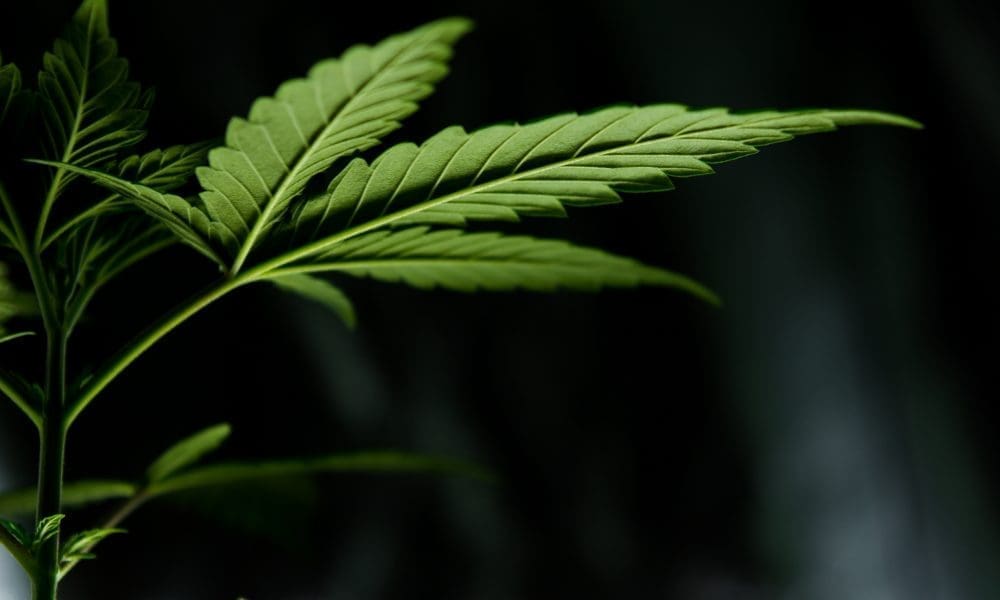A groundbreaking study reveals that practicing yoga after consuming marijuana can enhance mindfulness and mystical experiences. This suggests that factors such as setting and behavior play a crucial role in modulating the effects of cannabis.
The study, published as a psychology dissertation at the University of British Columbia, aimed to explore the impact of contextual factors on well-being outcomes during cannabis use. The researcher, Sarah Elizabeth Ann Daniels, noted that while these considerations are common in psychedelic therapy, they are often overlooked in relation to cannabis.
Daniels observed, “When using other psychoactive drugs for mental health conditions, researchers pay attention to contextual factors beyond the direct drug effects, such as mindset, setting, and behavior. There is considerable evidence that these factors significantly impact therapeutic outcomes. However, these factors are rarely considered in therapeutic cannabis use.”
The findings of the study imply that the actions taken while under the influence of cannabis can greatly influence its therapeutic benefits. The results support the concept that the set and setting during cannabis use can significantly impact the overall experience.
In order to test the effects of context on cannabis experience, Daniels asked 47 participants to self-administer cannabis twice, one week apart. During one session, they practiced yoga, while during the other session, they engaged in their usual activities while high. The most common activities reported were eating, watching TV or movies, doing housework, socializing, and participating in hobbies.
The participants were evaluated based on measures such as “state mindfulness,” “mysticality of experience,” and “state affect.”
The state mindfulness measurement included awareness of both mental states and bodily sensations, drawing from both traditional Buddhist and contemporary psychology models. Mystical experience referred to feelings of eternity, tranquility, or a loss of perception of time.
The study found significant improvements in reported mindfulness and mystical experiences in participants who practiced yoga with cannabis. Although mystical experiences are traditionally associated with psychedelic substances, Daniels notes that recent evidence suggests cannabis shares many similarities with psychedelic-induced altered states.
There was no significant difference in state affect, which refers to emotions and mood, between yoga and non-yoga sessions.
Daniels emphasizes the importance of studying set, setting, and other variables known as “extra-pharmacological factors” in order to understand the therapeutic potential of cannabis. This approach helped clarify early research on psychedelics.
The report states, “Similar to current cannabis studies, studies on psychedelics in the 1960s produced varying results. Researchers at the time began exploring and documenting the impact of set and setting on subjective drug effects, which became crucial in the study of psychedelic effects and therapy. Once set and setting were attended to, recorded psychedelic experiences shifted from overwhelmingly negative to overwhelmingly positive.”
Out of the participants, 72% (34) expressed their willingness to combine cannabis and yoga in the future. Yoga not only improved their cannabis experience but also enhanced their enjoyment of the practice itself.
In the words of one participant, “enhanced physical awareness” was the most frequently reported theme. This refers to an increased awareness of the body, movement, and physical sensations. Participants felt more in tune with their body and experienced a deeper level of connection. They highlighted that this was a different experience from practicing yoga while sober and considered it a positive addition.
While six participants had never practiced yoga before, the majority had either rarely, sometimes, or often practiced it.
Daniels concludes that paying attention to contextual factors and providing guidelines for therapeutic cannabis users could improve clinical outcomes and mental well-being. The study’s results may also provide insights on how to maximize benefits and minimize potential harms of therapeutic cannabis use. Yoga or similar mindful movement practices may be recommended in this context.
Furthermore, Daniels suggests that researchers should not discount the feeling of being “high” when studying the effects of cannabis. She argues that in the pharmaceutical field, there is a tendency to focus solely on a drug’s biological mechanism, while disregarding the psychoactive effects or considering them as undesirable side effects. The study findings support the therapeutic value found in the altered states of consciousness induced by psychoactive drugs like cannabis and psychedelics.
The U.S. Department of Defense’s Defense Advanced Research Projects Agency (DARPA) has recognized the consciousness-altering potential of psychedelics as a major side effect. Instead of hallucinations, DARPA seeks to develop pharmaceuticals that mimic psychedelics’ effects without the “significant side effects.”
While combining marijuana and yoga is not a new concept in the cannabis community, this study offers scientific evidence for the reported benefits. Classes that integrate both practices have existed since the early years of state-level legalization. However, most of the evidence has been anecdotal.
In fact, U.S. Representative Nancy Pelosi (D-CA) recommended marijuana and yoga as alternatives to opioids back in 2018, recognizing their potential as non-addictive and homeopathic approaches to pain relief.
Psilocybin Associated With ‘Significantly’ Reduced Symptoms Of Major Depression After One Dose, American Medical Association Study Finds



